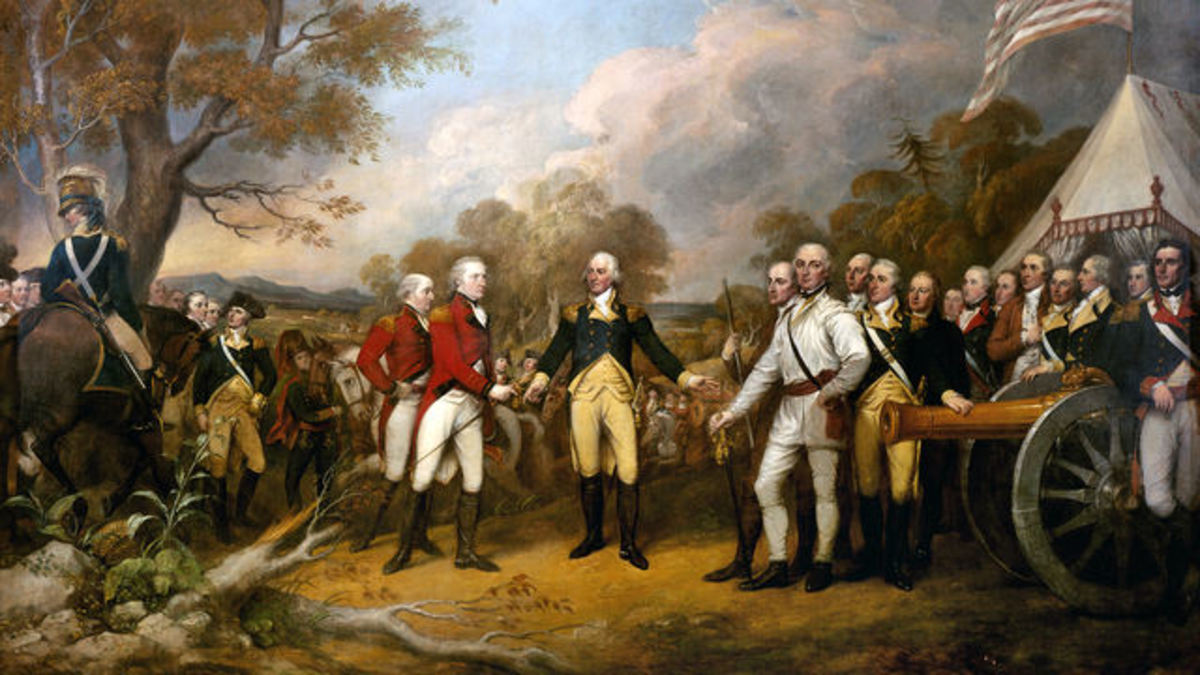About Publications Library Archives
cthl.org

Preserving American Heritage & History

Preserving American Heritage & History

When war erupted in 1775, it seemed clear that Britain would win. It had a large, well-organized land army, and the Royal Navy was unmatched on the sea. Many of the British troops in the Revolutionary War were veterans who had fought in the French and Indian War. On the other hand, the Americans had only a collection of undisciplined militiamen who had never fought before. The American navy was small and no match for the thousand ships in the royal fleet. The state of the army did improve after George Washington whipped the Continental Army into a professional fighting force, but the odds still seemed heavily stacked in Britain’s favor.
Nonetheless, the Americans believed that they did have a strong chance of success. They had a lot at stake: unlike the British, they were fighting on their home turf to protect their own homes and families. Perhaps most important, they were also fighting a popular war—a majority of the colonists were patriots who strongly supported the fight for independence. Finally, though most Americans had no previous military experience, their militia units were usually close-knit bands of men, often neighbors, who served together in defense of their own homes. They elected their own officers—usually men who did have some military training but who also knew the territory well. This native officer corps was a great source of strength, and as a result, American morale was generally higher than morale in the Royal Army.
Geography also gave the Americans an advantage that proved to be a major factor in the war’s outcome. To the British forces, the North American terrain was unusually rugged: New England was rocky and cold in winter, the South was boggy and humid in the summer, and the western frontier was almost impenetrable because of muddy roads and thick forests. In addition, because American settlements were spread out across a vast range of territory, the British had difficulty mounting a concentrated fight and transporting men and supplies. American troops, on the other hand, were used to the terrain and had little trouble. Finally, the distance between England and the United States put a great strain on Britain, which spent a great deal of time, energy, and money ferrying soldiers and munitions back and forth across the Atlantic.
After numerous battles, the turning point in the war came in 1777 at the Battle Of Saratoga in upstate New York. When American forces won, their victory encouraged France to pledge its support for the United States in the Franco-American Alliance of 1778. A year later, Spain followed suit and also entered the war against Britain. Spain, hoping to see Britain driven out of North America, had tacitly supported the Americans by providing them with munitions and supplies since the beginning of the war. Their entry as combatants took pressure off the Americans, as Britain was forced to divert troops to fight the Spanish elsewhere. Finally, The Netherlands entered the war against Britain in 1780.
Though the war went on for several years, American popular support for it, especially after France and Spain entered the fray, remained high. The motivation for rebellion remained strong at all levels of society, not merely among American military and political leaders. Many historians believe that it was this lasting popular support that ultimately enabled the United States to fight as long as it did. Although the United States did not really “win” the war—there were no clearly decisive battles either way—it was able to survive long enough against the British to come to an impasse. French and Spanish assistance certainly helped the Americans, but without the grassroots support of average Americans, the rebellion would have quickly collapsed.
Meanwhile, support in England for the war was low. In Parliament, many Whigs (a group of British politicians representing the interests of religious dissenters, industrialists, and others who sought reform) denounced the war as unjust. Eight years of their carping, combined with the Royal Army’s inability to win a decisive victory, fatigued the British cause and helped bring the Revolutionary War to an end.
Fortified by the Franco-American Alliance, the Americans maintained an impasse with the British until 1781, when the Americans laid siege to a large encampment of British forces under Lord Charles Cornwallis at Yorktown, Virginia. Scattered battles persisted until 1783, but the British, weary of the stalemate, decided to negotiate peace.
The war came to an official close in September 1783, when Britain, the United States, France, and Spain negotiated the Peace Of Paris. The treaty granted vast tracts of western lands to the Americans and recognized the United States as a new and independent country. The last British forces departed New York in November 1783, leaving the American government in full control of the new nation.